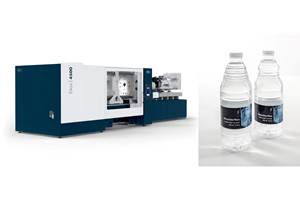Medical Equipment Poised for More Growth
Growth could hit 9-10% by year’s end.
In my last column on the medical market back in February, I stated that 2016 looked like it would be the beginning of the next accelerating growth cycle in medical-equipment production. And, that is exactly what has happened over the last six months.
Real Medical-Care Spending. At the start of 2014, real medical-care spending was growing at an annual rate of about 1%, which was the slowest in 20 years. By the end of 2015, spending was growing at an annual rate of almost 5%, which was the fastest in more than a decade. While the rate of growth in real medical-care spending decelerated in early 2016, the annual rate of growth was still virtually the fastest in more than a decade.
Medical-Equipment Production. Historically, production of medical equipment tends to lag real medical-care spending by 12-18 months. Device production generally has cycled through peaks and troughs every two years. While that cyclical pattern was disrupted by the Affordable Care Act, the historical pattern seems to be back in place. About one year after medical-care spending bottomed out, which would be about the start of 2015, medical-equipment production also bottomed out, contracting at an annual rate of about 2%.
The rate of contraction slowly decelerated during 2015, but the rate of change skyrocketed in early 2016. At the end of 2015, the annual rate of change was contracting at a rate of 1.2%, but just five months later the annual rate of change was growing at a rate of 2.5%. If historic patterns hold, then medical-equipment production should grow at an accelerating rate throughout 2016, possibly reaching a growth rate around 9-10% by the end of the year. This potential rate was last reached around the end of 2005 and the beginning of 2006.
Gardner Business Index. The Gardner Business Index reports on conditions in durable-goods manufacturing. You can see the latest index for the plastics processing marketplace here. In addition to the Plastics Processors’ Business Index, we compute indexes for a variety of industries, one of which is medical.
The index can be volatile from month to month, but since September 2015 the medical business index has been on an upward trend. The new orders index has been rising over that same time period. This was also true of the production index, although it dropped significantly in the most recent month. While the backlog index continued to contract, it has improved dramatically since September 2015. Industry employment has grown for five straight months. Despite the strong dollar, industry exports increased in three of the first six months in 2016. Supplier deliveries generally have lengthened since February, indicating increasing activity throughout the industry.
Future capital-spending plans for the upcoming 12 months have been positive, growing in three of the last six months compared with a year ago. As a result, the annual rate of change grew in June for the first time since February 2015. This is a positive sign that the medical-device industry will be spending more on capital equipment in the remainder of 2016.
ABOUT THE AUTHOR
Steven Kline Jr. is part of the fourth-generation ownership team of Cincinnati-based Gardner Business Media, which is the publisher of Plastics Technology. He is currently the company’s director of market intelligence. Contact: (513) 527-8800; skline2@gardnerweb.com; gardnerweb.com/economics/blog
Related Content
Krones Acquires Netstal
Krones adds PET preform injection molding to its bottle blowing and filling capabilities, as well as cap molding and expansion into medical, food and other markets.
Read MoreMedical Tubing: Use Simulation to Troubleshoot, Optimize Processing & Dies
Extrusion simulations can be useful in anticipating issues and running “what-if” scenarios to size extruders and design dies for extrusion projects. It should be used at early stages of any project to avoid trial and error and remaking tooling.
Read MoreCompact Solution for Two-Component Molding
Zahoransky’s new internal mold handling technology foregoes the time, space and money required for core-back, rotary table or index plate technologies for 2K molding.
Read MoreAllegheny Performance Plastics to Enter Health Care Sector
The custom molder has secured multiple projects in health care and will be adding cleanroom and white-room spaces, as well as injection molding machines, in support.
Read MoreRead Next
Making the Circular Economy a Reality
Driven by brand owner demands and new worldwide legislation, the entire supply chain is working toward the shift to circularity, with some evidence the circular economy has already begun.
Read MoreFor PLASTICS' CEO Seaholm, NPE to Shine Light on Sustainability Successes
With advocacy, communication and sustainability as three main pillars, Seaholm leads a trade association to NPE that ‘is more active today than we have ever been.’
Read More
.JPG;width=70;height=70;mode=crop)



















